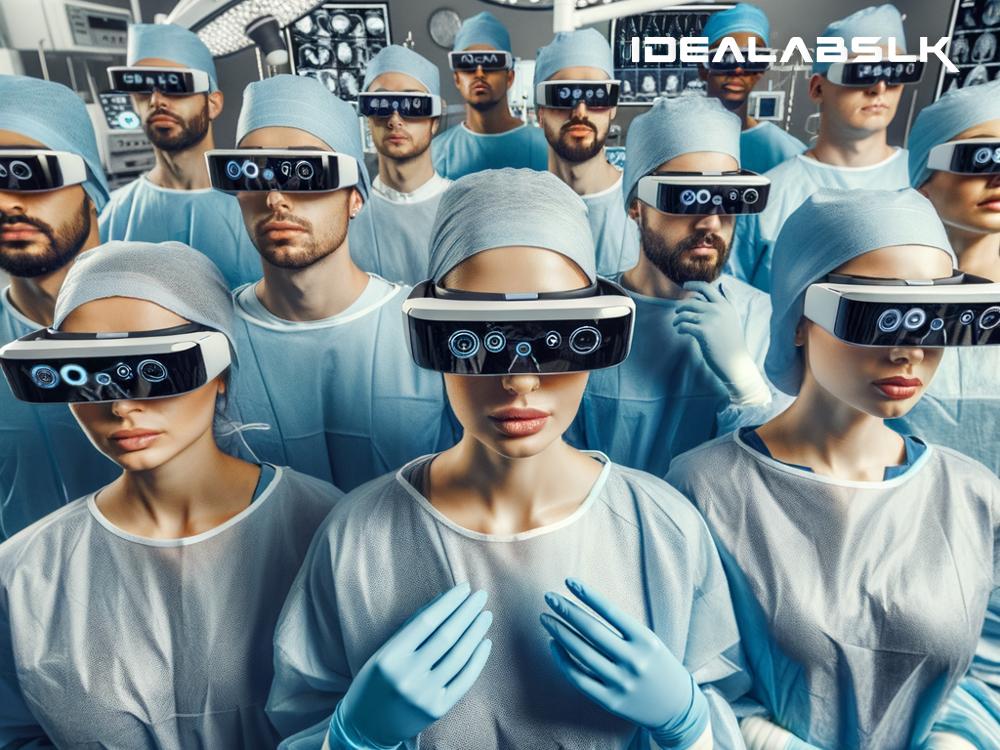How Augmented Reality (AR) is Transforming Healthcare: Applications in Surgery and Medical Training
In the world where technology intertwines with daily life, healthcare has not been left behind. Augmented Reality (AR), once a buzzword limited to the gaming and entertainment industry, has stealthily made its way into a sector as critical as healthcare. Its impact? Nothing short of transformative, especially in the realms of surgery and medical training. Let's delve into how AR is revolutionizing these areas, making complex procedures safer and medical training more effective.
Breaking Down AR in Healthcare
Imagine a world where surgeons can "see through" a patient's body, or medical students can practice surgeries without needing real human bodies. This isn't a scene from a sci-fi movie but the present reality, thanks to Augmented Reality. AR combines the real world with virtual images or information, providing users with an enhanced version of reality. In healthcare, this technology overlays digital information (like CT scans, MRI images, or anatomical data) onto the physical world, offering unprecedented insights during medical procedures and training.
AR in Surgery: A New Frontier
The operating room is where the magic of AR particularly shines. Surgeons use AR glasses or screens to superimpose a patient’s medical images (like MRI or CT scans) onto their body. This "X-ray vision" helps surgeons to visualize the exact location of a tumor, an organ's precise anatomy, or the path of blood vessels, without making large incisions.
This approach not only improves the surgeon's accuracy but also reduces the surgery time and the patient's recovery period. Such precision was unthinkable a few decades ago, but with AR, it’s the new normal. For instance, in complex operations like removing a tumor from a tricky part of the brain, AR guides surgeons in real-time, ensuring safety and precision at every step.
Revolutionizing Medical Training and Education
The traditional way of teaching medicine involved textbooks, cadavers, and observation. While effective, these methods have limitations, especially in terms of hands-on experience and understanding complex anatomical relationships. Enter AR, and the training landscape is forever changed.
Medical students and professionals now can use AR apps and devices to practice procedures in a simulated environment. These virtual settings offer a risk-free platform for learning and making mistakes, a critical part of the learning process. AR can replicate rare medical conditions that students might not have the chance to see in real life, providing them with a comprehensive learning experience.
Moreover, AR brings anatomical models to life. Instead of flat images in a book, students can interact with 3D models, seeing how different systems in the body interconnect and how diseases affect organs. This immersive experience enhances understanding and retention, making learning more engaging and effective.
The Future of AR in Healthcare
As AR technology advances, its potential in healthcare continues to expand. Beyond surgery and training, AR could play a pivotal role in patient care and education. Imagine AR applications that help patients understand their conditions and treatment plans better or even assist in rehabilitation by guiding physical therapy exercises.
Furthermore, as AR devices become more affordable and user-friendly, they will likely become a staple in medical institutions worldwide. This democratization of technology will enable even resource-limited settings to benefit from AR's transformative potential.
Challenges and Considerations
Despite its promising applications, AR's integration into healthcare is not without challenges. Privacy and security of patient data, the need for high-quality and accurate digital content, and the training required for medical professionals to adapt to this new technology are significant hurdles. Moreover, as with any technology, there's the risk of over-reliance, which could impede the development of fundamental skills in young practitioners.
However, the ongoing research and development aimed at overcoming these challenges suggest a future where AR's role in healthcare is as common as the stethoscope's. The interplay between technology and medicine is opening doors to possibilities that were once deemed fiction.
In Conclusion
Augmented Reality is transforming healthcare in ways that were once unimaginable. Its applications in surgery and medical training are not just enhancing the professionals' capabilities but are also making healthcare more accessible and efficient. As technology evolves, the boundary between the digital and physical worlds in healthcare blurs, promising a future where such integrations are central to medical practice and education. The journey of AR in healthcare is just beginning, and its full potential is yet to be uncovered.

